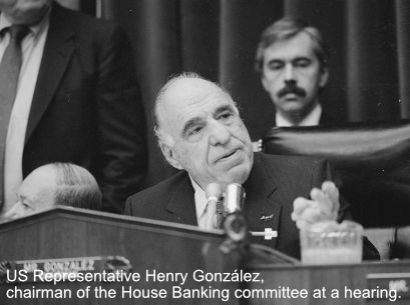This Week's Story
Henry B. became a trailblazer for healthcare, housing, and justice for all Amercians.

This Week’s Story relives American history and the Bible through brief inspiring stories presented on mp3 audio recordings and text for reading.
Henry B. González, from Child to Trailblazer, part three
“Adiós, mijo.” Henry B. looked at his mother. Tears were in the corners of her eyes.
Today was his first day of school. Henry B. walked into the door of his kindergarten class in San Antonio, Texas.”
“Good morning! Come in and be seated here.” She pointed to a desk. Students entered the classroom. Some glanced at him and some muttered, “Mexican!”
The teacher said calmly, “Children, be seated.” Soon the seats were filled. There were white students and Mexican American students. The day passed with the teacher speaking only English. Henry B. felt awkward. His family spoke little English at home, but they emphasized the importance of education and intellectual curiosity.
Each day Henry B. understood more of the words the teacher said. His parents encouraged him. “Mijo, respect your teacher. Keep your ears open to her. Become a good student in many subjects. You can bring good to this country.”
Discrimination was a thorn in school and San Antonio, Texas culture for minorities. It was enforced more by practice than law. Some examples were restaurants and soda fountains that refused to service minorities or told them to sit in segregated areas. Until the 1960’s some places had signs with the words: No Dogs, Negroes, or Mexicans. It was common for movie theaters to restrict minorities to specific seating sections. Some public swimming pools allowed Mexican Americans entry only on “Mexican day” and drained the pool afterwards or refused admittance at any time.
Texas law legally regarded Mexican Americans as white, but it was common to keep them from mixing with Anglos in barbershops, funeral homes, and housing areas. Discrimination was in employment, the courts, and designated Mexican rooms in ethnically mixed schools.
In contrast, San Antonio was a city of striking characteristics. It had 300 years of history and was a cultural epicenter in southwest America. It had economic and military significance. It was the site of the Alamo, a tourist magnet.
Amid these challenges Henry B. graduated from Jefferson High School in 1935, and then received his associate’s degree from San Antonio College. He attended the University of Texas at Austin for engineering, until he lacked finances. He earned money through boxing and became a Golden Gloves champion boxer. Onward he went to St. Mary’s University to complete a law degree.
He determined he would enter politics to confront discrimination. He married Bertha Cuellar. They had eight children. By 1953 he was on the city council of San Antonio. By 1956 he was a Texas State Senator, the first Mexican American to be in that position in the history of Texas. Biographer Eugene Rodriguez wrote that Henry B. “opened the minds of thousands of Texans who impulsively believed in segregation.”
In 1961 he was elected to the United States House of Representatives. He passed away in 2000 leaving improvements for health care, housing, and justice for ALL.
Todd Warren, Carlos Gamez, Gwen Crawford, and I, Barbara Steiner, join with you in committing to justice for all.
Follow thisweeksstory.com.
<< previous story] [next story >>
We invite your comments! [click here to comment]
This Week's Story is a non-profit supported by listeners. [click here to make a donation]
 click here to play audio
click here to play audio